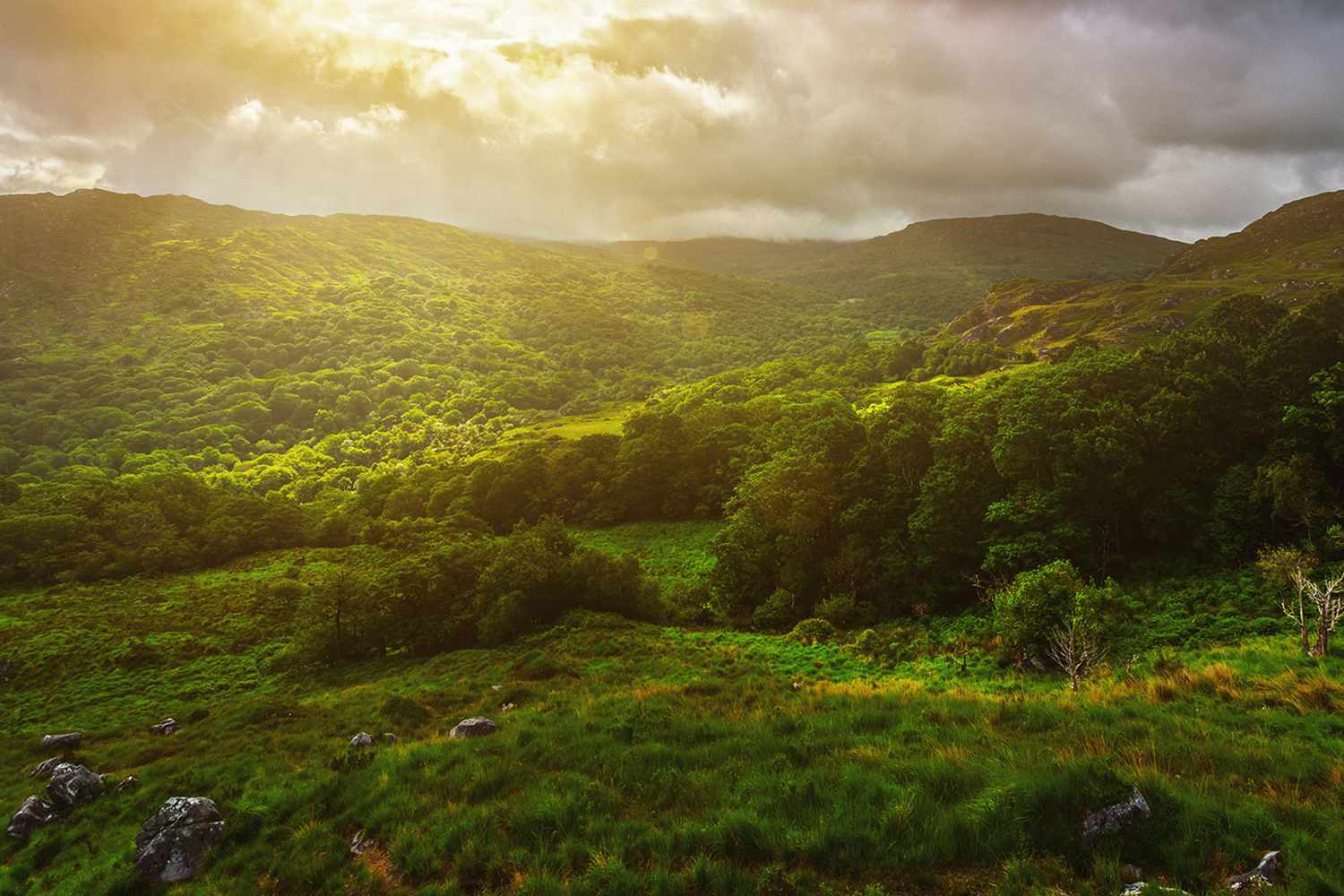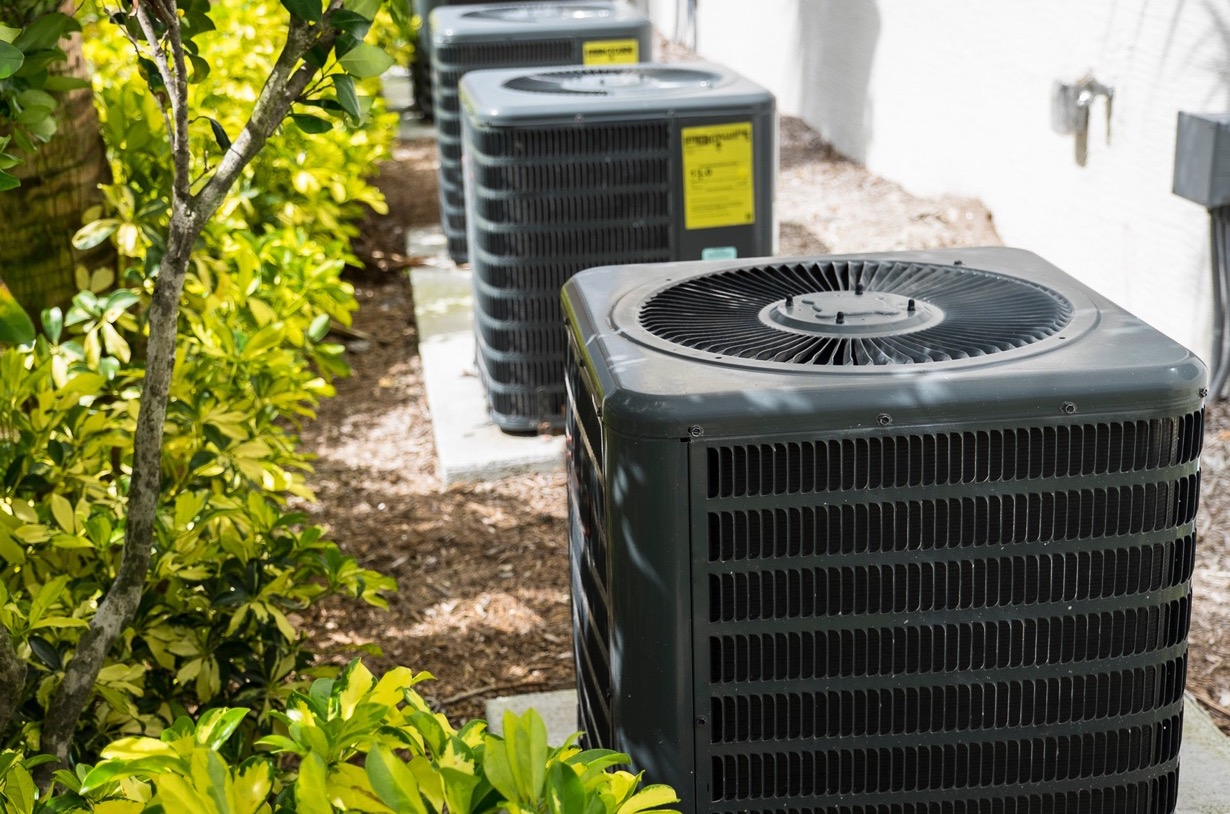Home>Garden Essentials>Which Country Has The Most Greenery


Garden Essentials
Which Country Has The Most Greenery
Modified: March 7, 2024
Discover which country boasts the most lush and vibrant garden landscapes, with an abundance of greenery that will leave you in awe.
(Many of the links in this article redirect to a specific reviewed product. Your purchase of these products through affiliate links helps to generate commission for Storables.com, at no extra cost. Learn more)
Introduction
Have you ever wondered which country boasts the most vibrant and lush green landscapes? The answer may surprise you. Greenery plays a crucial role in the overall health and well-being of our planet. In addition to providing us with cleaner air, it serves as a vital habitat for various species and helps regulate temperature and rainfall patterns.
In this article, we will explore which country reigns supreme when it comes to greenery coverage. We will delve into the methodology used to determine these rankings, highlight some of the countries with high greenery coverage, discuss the factors that contribute to their success, and examine the challenges they face in preserving their precious natural landscapes.
So, buckle up and get ready to embark on a journey through breathtaking scenery and discover the wonders of the world’s greenest countries!
Key Takeaways:
- Finland, Iceland, and New Zealand are among the top countries with abundant greenery coverage, thanks to their strict environmental policies, conservation efforts, and promotion of eco-tourism.
- Challenges like deforestation, climate change, and urbanization threaten the preservation of green spaces. Collaborative action and innovative solutions are crucial to protect and restore our precious natural landscapes.
Read more: Which State Has The Most Greenery
Methodology
Determining the country with the most greenery is no easy task. It requires a comprehensive and systematic approach to gather data and analyze the extent of vegetation cover. One commonly used method is satellite imagery, which provides detailed and accurate information about land cover types.
To calculate greenery coverage, researchers analyze satellite images to identify areas with vegetation. This can be done by measuring the amount of green pixels in the images or classifying different land cover types. The data is then aggregated and compared across different countries.
Another approach is to utilize remote sensing technology, which uses sensors mounted on aircraft or satellites to capture information about vegetation health and density. This data is collected at regular intervals, allowing for a continuous assessment of greenery coverage.
Researchers also take into account factors such as forest coverage, national parks and reserves, as well as the presence of urban green spaces. By considering these various indicators, a more holistic picture of a country’s greenery coverage can be obtained.
It is worth noting that the methodology used may vary across studies, leading to slight variations in rankings. However, the general consensus among researchers is that these methods provide a reliable estimation of greenery coverage.
Now that we understand the methodology behind determining greenery coverage, let’s explore some of the countries that have been identified as having high greenery levels.
Countries with High Greenery Coverage
When it comes to countries with abundant greenery coverage, there are a few notable contenders that consistently rank highly in studies and assessments. These countries have managed to preserve and maintain their natural landscapes, ensuring a thriving ecosystem and breathtaking scenery for both locals and visitors.
One country that stands out is Finland. Known as the “Land of the Thousand Lakes,” Finland boasts vast forests, pristine lakes, and untouched wilderness. With approximately 70% of its land covered in forests, Finland has made significant efforts to protect its natural heritage. The country has strict legislation in place for sustainable forestry practices and promotes eco-tourism, allowing visitors to immerse themselves in the stunning landscapes while minimizing their impact on the environment.
Another country known for its remarkable greenery coverage is Iceland. Despite its name implying a barren landscape, Iceland surprises visitors with its dramatic waterfalls, geothermal hot springs, and rolling green meadows. The island nation takes great pride in its commitment to environmental preservation and has implemented policies to protect its pristine natural sites. With a combination of volcanic activity and a relatively low population, Iceland is able to maintain its natural beauty.
New Zealand is yet another country admired for its greenery coverage. This island nation is a nature lover’s paradise, with its majestic mountains, sparkling lakes, and dense rainforests. New Zealand places great importance on sustainability and conservation, and has designated several national parks and protected areas to safeguard its unique ecosystems. The country also takes pride in its indigenous Maori culture, which has a deep connection to the land and promotes harmonious coexistence with nature.
Other countries that rank highly in terms of greenery coverage include Sweden, Canada, and Bhutan. Sweden’s lush forests and scenic waterways make up a significant portion of its land area, while Canada boasts expansive forests, picturesque landscapes, and an abundance of national parks. Bhutan, the only carbon-negative country in the world, is known for its commitment to environmental preservation and measures to maintain forest coverage.
These countries serve as inspiring examples of the successful preservation and sustainable management of their natural landscapes. By striking a balance between human development and environmental conservation, they have been able to maintain high levels of greenery coverage.
But what exactly contributes to their success? Let’s explore some of the factors that play a role in their ability to preserve their green spaces.
The country with the most greenery is Finland, with over 70% of its land covered in forests and other natural vegetation.
Factors Contributing to High Greenery Coverage
Several key factors contribute to the high greenery coverage in countries recognized for their lush landscapes and abundant vegetation. These factors, which vary from country to country, play a crucial role in the preservation and maintenance of green spaces.
1. Strong Environmental Policies: Countries with high greenery coverage typically have well-defined and robust environmental policies in place. These policies often include regulations for sustainable land use, protection of natural habitats, and reforestation efforts.
2. Conservation Efforts: Active conservation efforts and initiatives are instrumental in maintaining greenery coverage. This includes establishing national parks, nature reserves, and protected areas, where natural habitats can thrive undisturbed.
3. Sustainable Forestry Practices: Managing forests sustainably is paramount in preserving greenery. Countries that actively practice sustainable forestry ensure responsible logging, reforestation, and biodiversity conservation.
4. Public Awareness and Education: Raising public awareness about the importance of green spaces and ecosystems fosters a culture of environmental stewardship. Countries with high greenery coverage invest in educating their citizens and promoting environmentally friendly practices.
5. Promotion of Eco-Tourism: Encouraging eco-tourism helps generate income while minimizing the impact on the environment. Countries with high greenery coverage often promote eco-friendly tourism practices and provide opportunities for visitors to appreciate nature responsibly.
6. Embracing Sustainability: Incorporating sustainable practices into various sectors, including agriculture, infrastructure development, and energy production, contributes to maintaining greenery coverage. Adopting renewable energy sources and implementing green building practices are just a few examples.
7. Respect for Indigenous Knowledge and Practices: Recognizing and respecting the traditional knowledge and practices of indigenous communities can play a vital role in preserving green spaces. Indigenous peoples often have deep connections to the land and possess valuable insights into sustainable land management.
8. Government Commitment: A strong commitment by the government to environmental preservation is crucial. This includes setting ambitious targets for conservation, allocating resources for restoration projects, and collaborating with local communities and international organizations.
By considering these factors, countries can create an enabling environment for the preservation and growth of greenery coverage. However, there are also challenges that these countries face in their efforts to maintain their precious natural landscapes.
Challenges to Greenery Preservation
While countries with high greenery coverage have made significant strides in preserving their natural landscapes, they still face a range of challenges that pose threats to their greenery preservation efforts. These challenges require ongoing attention and collective action to ensure the long-term sustainability of these precious ecosystems.
1. Deforestation: Deforestation remains a major concern globally. Illegal logging, agricultural expansion, and urbanization continue to contribute to the loss of forests and green spaces. Countries must implement strict measures to combat deforestation and promote reforestation initiatives.
2. Climate Change: The impact of climate change poses a significant threat to greenery preservation. Rising temperatures, changing rainfall patterns, and extreme weather events can disrupt ecosystems and impact plant and animal life. Implementing adaptation and mitigation strategies is crucial to protect green spaces from the adverse effects of climate change.
3. Habitat Destruction: Human activities such as urban development, infrastructure projects, and industrial expansion can lead to the destruction and fragmentation of natural habitats. This can have detrimental effects on wildlife populations and ecological balance. Efforts must be made to protect and restore habitats to ensure the survival of diverse species.
4. Invasive Species: Invasive species can outcompete native plants and disrupt ecosystems, leading to a decline in greenery coverage. Controlling and managing the spread of invasive species is essential to maintain the integrity of natural landscapes.
5. Pollution and Environmental Degradation: Pollution from industrial activities, agriculture, and waste disposal can severely impact the health and vitality of green spaces. Implementing strict regulations to reduce pollution and adopting sustainable practices is essential in preserving these ecosystems.
6. Population Growth and Urbanization: The rapid growth of urban areas puts pressure on green spaces as land is converted for residential, commercial, and infrastructure development. Finding a balance between urban expansion and preserving natural environments is crucial to maintain greenery coverage.
7. Limited Resources: Allocating sufficient resources for greenery preservation can be challenging, especially for countries with competing priorities. Adequate funding and investment in conservation efforts are necessary to protect and restore green spaces.
8. Globalization and Consumer Demand: Global demand for resources such as timber, palm oil, and agricultural products can drive deforestation and unsustainable land use practices. Encouraging sustainable sourcing and consumer awareness can help alleviate the pressure on green spaces.
Despite these challenges, countries with high greenery coverage continue to work towards finding innovative solutions and implementing policies that balance development and environmental preservation. By recognizing these challenges, we can collectively take action to protect and restore green spaces for future generations to enjoy.
Read more: Which City Has The Most Green Space
Conclusion
Greenery coverage plays a vital role in maintaining the health and beauty of our planet. Countries with high levels of greenery coverage demonstrate the successful preservation and sustainable management of their natural landscapes. Through strong environmental policies, conservation efforts, and sustainable practices, these countries have been able to maintain abundant vegetation and breathtaking scenery.
Finland, Iceland, New Zealand, Sweden, Canada, and Bhutan are just a few examples of countries that have achieved remarkable greenery coverage. Their commitment to environmental preservation, public awareness, and sustainable practices has allowed them to serve as role models for greenery preservation on a global scale.
Nevertheless, these countries face ongoing challenges in their efforts to protect green spaces. Deforestation, climate change, habitat destruction, invasive species, pollution, urbanization, limited resources, and consumer demand pose significant threats to greenery preservation. Addressing these challenges requires collaborative efforts, innovative solutions, and long-term commitment from governments, individuals, and international organizations.
The importance of greenery preservation cannot be overstated. Green spaces provide valuable ecosystem services, improve air quality, support biodiversity, and enhance the overall well-being of both humans and wildlife. By recognizing the value of greenery coverage and taking proactive measures to protect and restore natural landscapes, we can ensure a sustainable and vibrant future for generations to come.
So, let us celebrate and learn from the countries that have excelled in greenery preservation while also taking steps in our own lives to contribute to the protection and growth of green spaces. Together, we can make a difference in preserving the beauty and abundance of our natural world.
Frequently Asked Questions about Which Country Has The Most Greenery
Was this page helpful?
At Storables.com, we guarantee accurate and reliable information. Our content, validated by Expert Board Contributors, is crafted following stringent Editorial Policies. We're committed to providing you with well-researched, expert-backed insights for all your informational needs.















0 thoughts on “Which Country Has The Most Greenery”